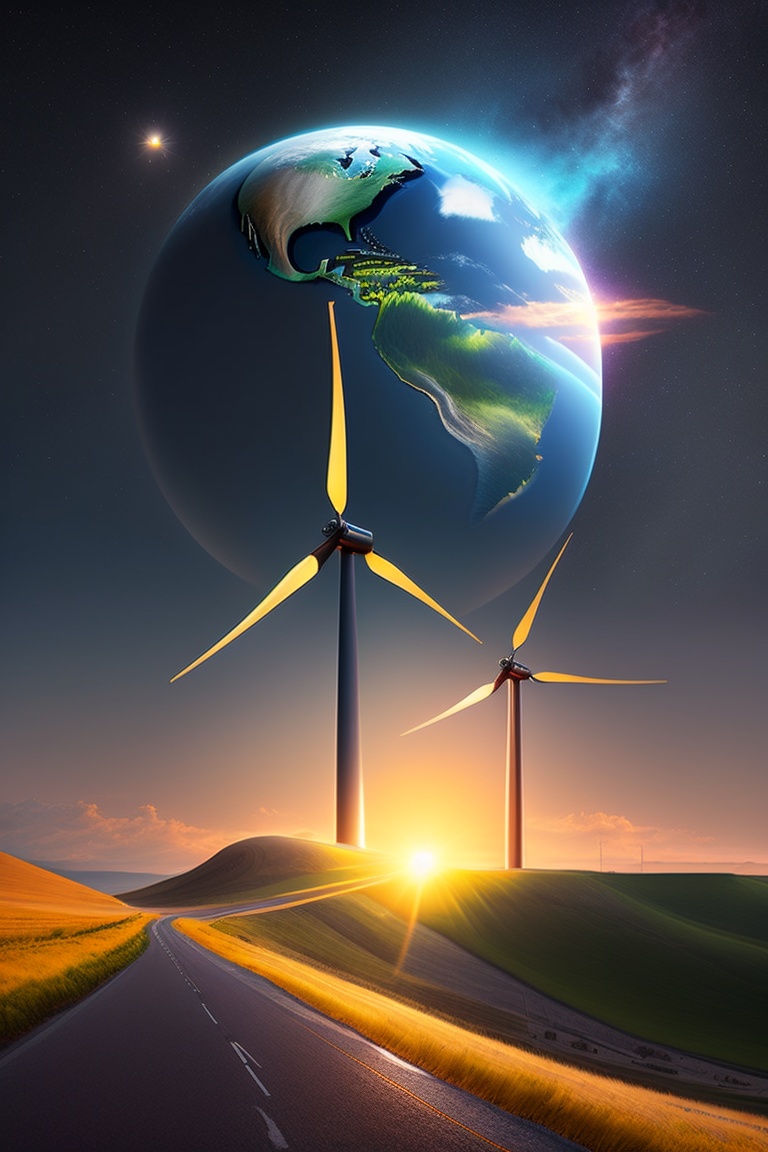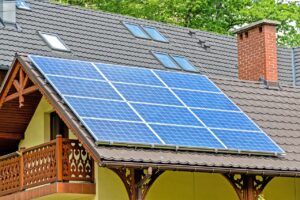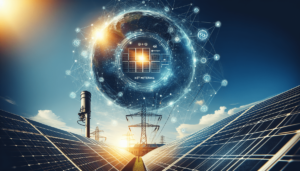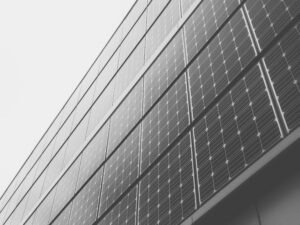Pros and Cons of Renewable Energy: Introduction
Welcome, reader! Ever wondered why the planet doesn’t just stop spinning and throw us all off into space like a discus at the Olympics? (I promise it’s not due to the gravitational pull of your mother-in-law’s meatloaf). Our blue gem of a planet is held in the giant, unyielding grasp of the sun’s gravity, the same sun that is one of the key sources of renewable energy. This article will take you on a wild and whimsical journey through the world of renewable energy, highlighting the pros and cons of renewable energy with a dash of humor for good measure. So buckle up, because we’re about to go green and get a little greener, figuratively, of course!
Pros and Cons of Renewable Energy: Unveiling Renewable Energy
What Is Renewable Energy?
Allow me to introduce you to a concept as comforting as your grandma’s apple pie, renewable energy. The ‘renewable’ in renewable energy essentially means ‘incapable of running out’, kind of like the cheeky charm of a golden retriever puppy. Unlike fossil fuels, which are more like a box of cookies that inevitably empties, renewable energy is like a magical cookie box that replenishes itself (if only!).
Essentially, renewable energy comes from sources that Mother Nature, in her infinite wisdom, continuously replaces. Sunlight, wind, water, plant matter – you name it! If it’s a natural resource that keeps renewing itself, we’re onto it like bees to honey.
Types of Renewable Energy
Solar Energy: The Powerhouse of the Sky
Ever felt like you could fry an egg on the sidewalk during a hot summer’s day? That’s solar energy for you, the biggest nuclear reactor we have at our disposal, conveniently located 93 million miles away in space. Solar energy involves capturing the sun’s rays (preferably without frying any eggs) and converting them into electricity using photovoltaic cells. This technology is becoming more efficient and affordable by the day. It’s like upgrading from a flip phone to a smartphone: you’re still making calls, but now you can also take photos, send emails, and lose hours scrolling through social media.
Wind Energy: The Invisible Power
Imagine trying to catch a gust of wind in a bottle. Sounds impossible, right? But that’s essentially what wind energy is all about. Using giant turbines that look like propellers from a giant RC plane, we can capture the wind and turn it into usable energy. These turbines convert the kinetic energy of the wind into mechanical power, which can then be used directly for specific tasks (like pumping water) or be converted into electricity. It’s like having an invisible, silent giant blowing on a pinwheel that powers your entire house.
Hydropower: Going with the Flow
Do you remember those tiny water wheels you used to play with in the bath as a kid? Well, hydropower is the same thing, just on a Godzilla scale. Hydropower harnesses the power of flowing or falling water to generate electricity, typically by creating a dam across a river. The dam creates a reservoir, and when the water is released, it rushes past turbines, spinning them, and voila – you’ve got power. It’s the water slide of the energy world: fun, efficient, and a great way to keep the lights on.
Geothermal Energy: Earth’s Hidden Heat
Geothermal energy is like the planet’s hot flashes. The Earth’s core is hotter than a jalapeno pepper, and this heat can be used to generate electricity or heat buildings. By digging deep wells into the Earth’s crust, we can bring hot water or steam to the surface and use it to drive a turbine that generates electricity. It’s like tapping into the planet’s central heating system, and the best part? The heat is continually replenished, so there’s no worry about cold spots!
Biomass Energy: Power from Plants
Biomass energy is like composting on steroids. It involves using organic materials (such as plants, wood, and waste) to produce electricity, heat, or biofuels. These substances are burned to release their stored energy. Sure, it’s a bit more ‘back to basics’ than some of the other sources, but sometimes the old ways can complement the new!
Tidal Energy: The Power of the Sea
Lastly, we have tidal energy. This type of energy uses the power of the ocean’s tides to generate electricity. Just like a giant water mill, tidal turbines are placed in the sea where the tide is strong. As the tide comes in or goes out, it spins the turbines, which generate electricity. It’s not as widely used as the other sources, but hey, Poseidon would be proud!
Perks of Going Green: Pros of Renewable Energy
Never-ending Supply: The Energizer Bunny of Power
Renewable energy is like the Energizer Bunny – it keeps going and going and going. The sun isn’t going to stop shining, the wind isn’t going to stop blowing, and the rivers aren’t going to stop flowing anytime soon. With renewable energy, we’re investing in a source that’s going to stick around for as long as Earth exists, just like the ever-present memes on the internet.
Reduced Greenhouse Emissions: Nature’s Sigh of Relief
If our planet had a nose, it would definitely appreciate renewable energy. These sources release significantly less greenhouse gas emissions than traditional fossil fuels, which means we’re reducing our carbon footprint and combating global warming. It’s like changing from heavy boots to fluffy slippers for Mother Earth.
Energy Independence: Who Needs Foreign Oil?
Renewable energy provides a pathway to energy independence. No longer would we need to rely on imports from other countries for our energy needs. It’s like growing your own vegetables in the backyard instead of buying them from the supermarket. Fresh, sustainable, and home-grown!
Job Creation: More Power, More Employment
Renewable energy isn’t just good for the planet, it’s good for the economy too. The renewable sector creates more jobs than the fossil fuel industry. Imagine every solar panel or wind turbine as a job opportunity. It’s not just a career, it’s a career with a conscience!
Innovation and Technological Advancement: The Future is Now
The shift towards renewable energy is fueling innovation. We’re seeing advancements in battery storage technology, smart grids, and energy efficiency. It’s like living in a sci-fi movie, only it’s real, and you don’t need to worry about an alien invasion.
The Thorny Side: Cons of Renewable Energy
Intermittent Supply: The Peek-a-Boo of Energy
Renewable energy has a bit of a peek-a-boo problem. The sun doesn’t always shine, the wind doesn’t always blow, and rivers don’t always flow at the same speed. This can make supply a bit inconsistent, kind of like trying to catch a toddler in a game of tag.
High Initial Costs: The Check is in the Mail
The initial cost of setting up renewable energy technology can be high. It’s like buying a high-end electric car. Yes, you save on fuel in the long run, but that initial price tag can make your wallet feel lighter than a helium balloon.
Space Requirements: Land, Land, and More Land
Renewable energy sources require a lot of space. Solar and wind farms need vast tracts of land to be effective. It’s like throwing a huge party but realizing your apartment is the size of a shoebox.
Energy Storage: It’s a Matter of Time
Storing renewable energy for use when the supply is low is a challenge. While battery technology is improving, it’s still a bit like trying to keep an ice cream cone from melting on a hot summer day.
Environmental Impact: A Smaller Footprint, But a Footprint Nonetheless
Even renewable energy has some environmental impact. Building large solar farms or damming rivers for hydropower can disrupt local ecosystems. It’s like moving into a new apartment: you try to leave things as they were, but there’s always a bit of rearranging needed.
The Future of Renewable Energy: A Greener Horizon
Imagine waking up in a world where every home is powered by clean, renewable energy, cities are pollution-free, and climate change is no longer an impending doom but a problem of the past. Sounds too good to be true? The pros and cons of renewable energy will dictate the future, so buckle up and let’s take a sneak peek into tomorrow.
Advanced Technologies: No Sci-Fi, Just Science
The future of renewable energy lies in technology and innovation. We’re not talking about time machines or teleportation devices (although, how cool would those be?), but advancements that make renewable energy more efficient, affordable, and widespread. Energy storage is one field that’s experiencing rapid growth. Imagine a battery that could store enough solar power during the day to power a city at night. It’s like a hibernating bear storing up enough energy to last the winter, but in this case, it’s not honey but solar energy we’re storing.
Decentralized Power Generation: Power to the People
One of the most exciting prospects is the shift towards decentralized power generation. This means homes and businesses generate their own power through rooftop solar panels or local wind turbines. Think about it – you could be sipping coffee brewed with power generated from your own roof. It’s like growing your own coffee beans, but with sunlight!
Hydrogen and Biofuels: The Next Frontier
Emerging technologies such as hydrogen power and advanced biofuels could play a significant role in our energy future. These offer the potential to provide power with zero carbon emissions. Hydrogen, for example, can be produced from water using renewable energy and could serve as a clean fuel for everything from cars to power plants. It’s like turning water into wine, but instead, we’re turning water into a clean, green fuel.
Intelligent Grid Systems: Smart and Green
The future will likely see the development of ‘smart’ grids – electricity networks that can automatically monitor and optimize the generation and distribution of electricity. Picture a grid that could balance the supply and demand of electricity on its own, adapting to changes in real time. It’s like having a personal assistant for the power grid!
Integration of Renewable Energy Sources: The Power Ensemble
A discussion about the pros and cons of renewable energy wouldn’t be complete without taking a look at a more significant integration of various renewable energy sources. Each source has its own strengths and weaknesses, but by combining them, we can ensure a steady and reliable supply of power. It’s like a band – the drummer is great on his own, but when you add in the guitar, bass, and vocals, you get a real symphony of sound, or in this case, energy.
In conclusion, the future of renewable energy is not just promising; it’s crucial. In the face of climate change, shifting towards renewable energy isn’t just a smart move; it’s a necessity. And with the advancements we’re seeing today, that future might be closer than we think. So here’s to a future where we can all breathe a little easier, knowing our planet is in good hands.
Conclusion
So, there you have it – the humorous yet enlightening pros and cons of renewable energy. It’s not all sunshine and rainbows (or even solar panels and wind turbines), but the pros and cons of renewable energy weigh in heavily on the pros. Renewable energy, with its infinite supply and potential for reducing greenhouse gas emissions, offers a viable solution to our energy needs and a way to mitigate the impacts of climate change.
Sure, there are obstacles – the initial costs, the space requirements, and the challenges with storage and supply. But think about it, every great leap forward comes with its own set of challenges. Remember when we decided to put a man on the moon? We didn’t back down because it was hard. We faced the challenges head-on, innovated, and made history. The pros and cons of renewable energy aren’t all that different.
Moreover, with continuous advancements in technology, the future of renewable energy looks promising. Who knows? In a few years, we might just find a way to make the sun shine at night (figuratively, of course!) and store wind energy for those calm, still days.
FAQs
1. Is renewable energy reliable? Renewable energy, like a trusty old friend, can be relied upon for the long haul. The sun and wind may not be available 24/7, but with advancements in energy storage technologies and grid solutions, we can mitigate these intermittency issues. It’s like having a stash of cookies for when the cookie jar runs out.
2. How does renewable energy compare to fossil fuels in terms of cost? The initial setup costs of renewable energy can be high, like buying a new house. However, once it’s up and running, the ongoing costs are low. In fact, in many cases, renewable energy is now cheaper than fossil fuels. So, while the upfront costs may be more, over time, the house (or in this case, the power source) pays for itself.
3. What is the most efficient form of renewable energy? Efficiency can be tricky to pin down, as it depends on factors like location and technology. For instance, solar power might reign supreme in a sunny desert, while wind power might take the crown in a gusty plain. It’s like choosing between ice cream flavors – it all depends on personal preference (or in this case, geographical suitability).
4. Does renewable energy create jobs? Yes, indeed! Renewable energy is not just an environment savior but also a job creator. The sector has been shown to create more jobs per unit of energy than fossil fuels. It’s like a two-for-one deal: save the planet and boost the economy!
5. Can I install renewable energy solutions in my home? Absolutely! Installing renewable energy solutions at home is like growing your own vegetable garden. Not only do you get the satisfaction of being self-sufficient, but you also get to contribute to a greener planet. Options include solar panels, wind turbines, and even geothermal systems, depending on your location and budget. It’s a win-win situation all around!




